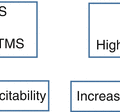© Springer International Publishing AG 2018
Stefano Masiero and Ugo Carraro (eds.)Rehabilitation Medicine for Elderly PatientsPractical Issues in Geriatricshttps://doi.org/10.1007/978-3-319-57406-6_1212. The Contribution of Occupational Therapy: A Profession in Support of the Elderly
Mary Ardia1, 2 , Yann Bertholom3, 4, 5 , Giovanna Caiata-Olgiati1, 2, 6 , Christian Pozzi7, 8, 9 and Heather L. Hammond4, 5, 10, 11
(1)
Dipartimento economia aziendale, sanità e sociale, Centro Competenze Anziani, Manno, Switzerland
(2)
Dipartimento economia aziendale, sanità e sociale, Scuola Universitaria Professionale della Svizzera Italiana (SUPSI), Manno, Switzerland
(3)
Il Paese di Oz – ANFFAS, Trento, Italy
(4)
Società Tecnico Scientifica Italiana di Terapia Occupazionale (SITO), Rome, Italy
(5)
Facoltà di Medicina & Chirugia, Università degli Studi di Modena & Reggio-Emilia, Modena, Italy
(6)
Caribù Center of Occupational Therapy, Biasca, Switzerland
(7)
Department of Rehabilitation and Aged Care of the Ancelle Hospital, Cremona, Italy
(8)
Geriatric Research Group, Brescia, Italy
(9)
Facoltà di Medicina & Chirugia, Università Cattolica del Sacro Cuore, Rome, Italy
(10)
Facoltà di Medicina and Chirugia, Claudiana Scuola Provinciale Superiore di Sanità, Bolzano, Italy
(11)
Centro di Terapia Occupazionale, Bologna, Italy
Mary Ardia
is an OT at the “Centro Competenze Anziani” in Manno, Switzerland, and is a lecturer for the Department of Business Economics, Health, and Social Care at the “Scuola Universitaria Professionale della Svizzera Italiana” (SUSPI). She specializes in palliative care and also works in private practice.
Yann Bertholom
is an OT at the rehabilitation center of “Il Paese di Oz – ANFFAS” in Trento, Italy, and is the president of the Italian Scientific Society of Occupational Therapy (SITO). He is a lecturer for the Undergraduate Occupational Therapy program at the “University of Modena and Reggio Emilia” (UNIMORE).
Giovanna Caiata-Olgiati
is an OT at the “Centro Competenze Anziani” in Manno, Switzerland, and is a lecturer for the Department of Business Economics, Health, and Social Care at the “Scuola Universitaria Professionale della Svizzera Italiana” (SUSPI). She also works at the “Caribù Center” of Occupational Therapy in Biasca, Switzerland.
Christian Pozzi
is an OT at the “Ancelle” Rehabilitation Hospital in Cremona, Italy, and works with the Geriatric Research Group in Brescia, Italy. He teaches at the “Sacro Cuore” Catholic University in Rome, Italy.
Heather L. Hammond
is an OT at the “Centro di Terapia Occupazionale” in Bologna, Italy. She is a lecturer for the Undergraduate Occupational Therapy programs at the “University of Modena and Reggio Emilia” (UNIMORE) and at the “Claudiana Scuola Provinciale Superiore di Sanità” in Bolzano, Italy. She is also a board member of the Italian Scientific Society of Occupational Therapy (SITO).
12.1 Background
Occupational therapists, by virtue of their name (at least in English) and their history, have always been concerned with occupation, also called “meaningful activity.” This concern has taken two forms: occupation as means and occupation as goal. The former, often captured under the rubric “therapeutic use of activity,” has been a focus of occupational therapy1 (OT) for most, if not all, of its history.
The latter, however, captured under the rubric “occupation-based practice,” only became a major focus of practice at the end of the twentieth century. For much of its history, OT’s use of occupation, or meaningful activity, was from within a medical paradigm, with the aim to improve outcomes for individuals suffering from diseases or disorders through the therapeutic use of activity [1].
12.2 Introduction
An elderly person carries with them their sense of being and doing, even with the risk of unexpected fragility [2] that comes with aging, and the limitations associated with it. Every elderly person has their own personal life course that has contributed to their current situation by the very nature of their past decisions. For example, as we see in the ecological model [3], the way in which each person experiences aging changes according to differences found in everyday situations, social and economical status, gender, and type of housing. The positive and negative events that shape the normal trajectory of life is modeled by the cultural environment, composed of socioeconomic conditions, career choices, health status, family relationships, and friendships.
Stay updated, free articles. Join our Telegram channel

Full access? Get Clinical Tree




